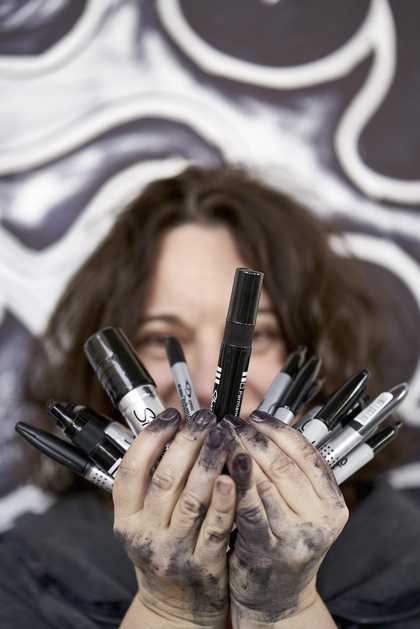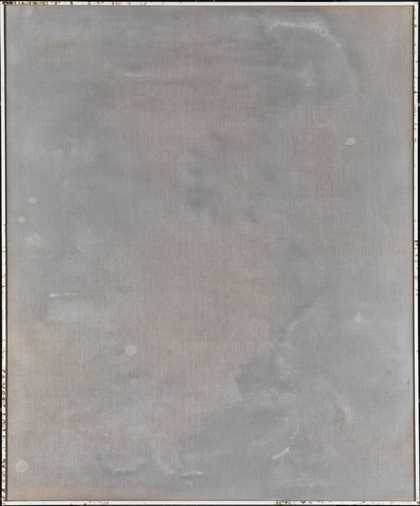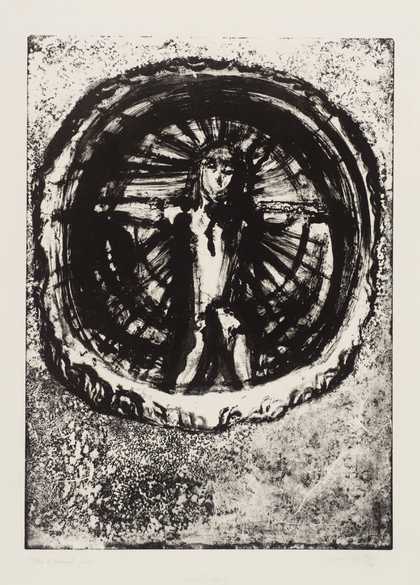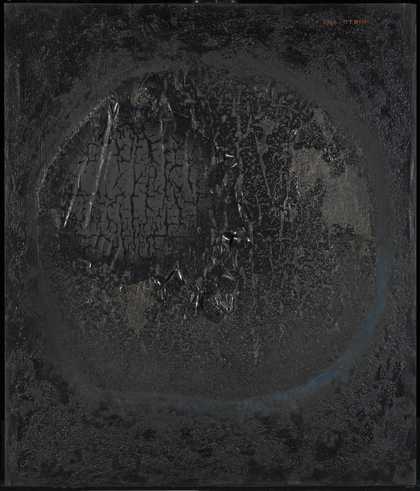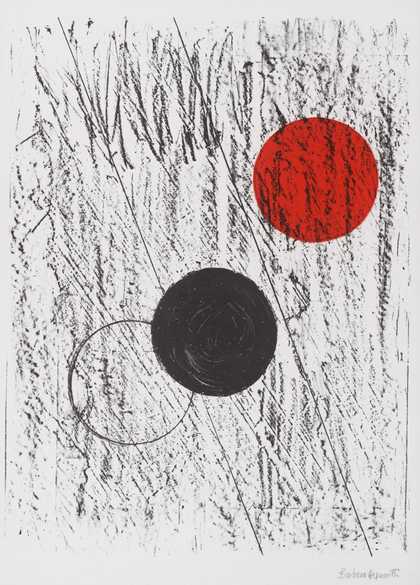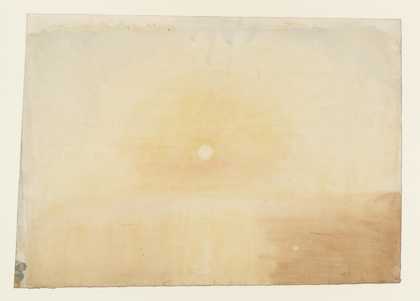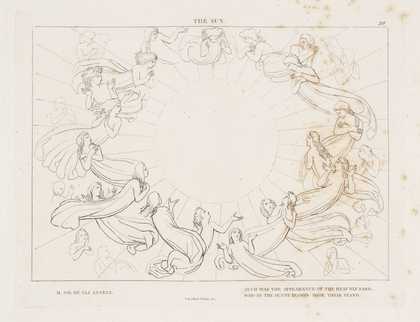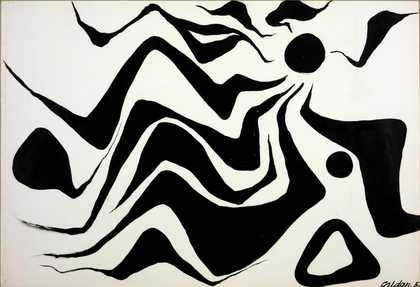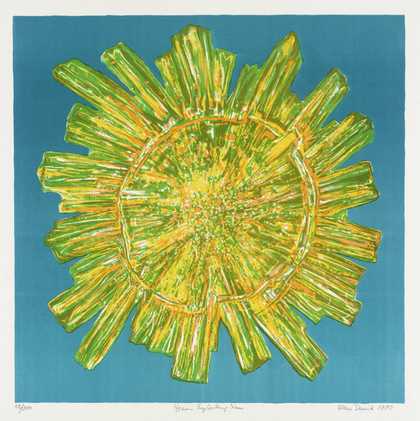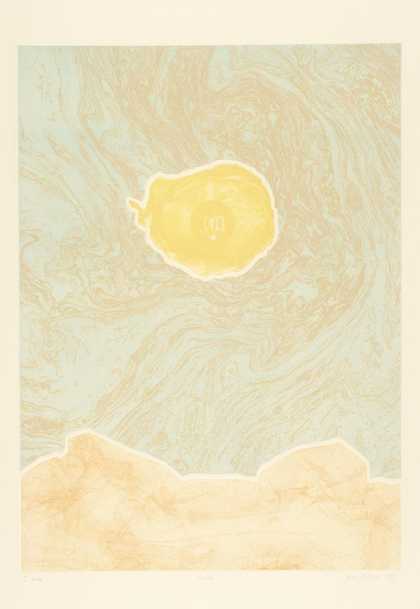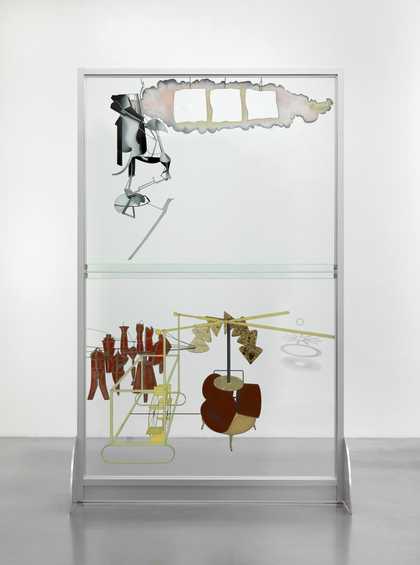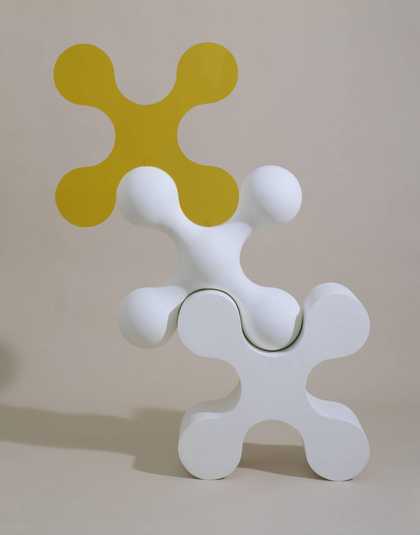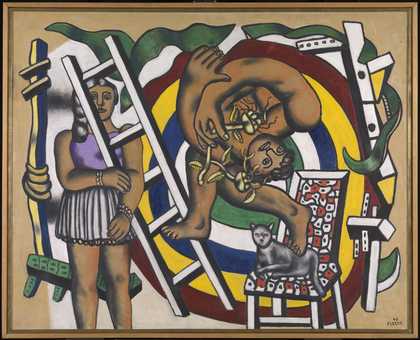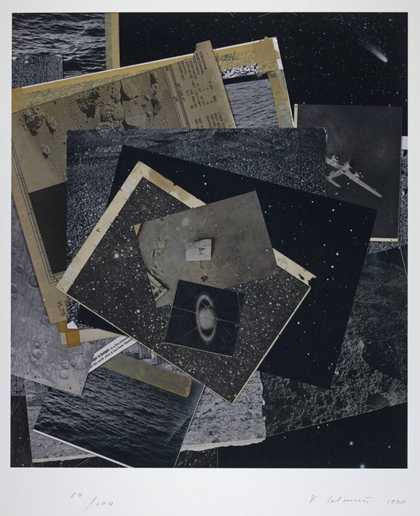
Vija Celmins
Untitled (Source Materials) (1999)
ARTIST ROOMS Tate and National Galleries of Scotland
The Space Race and the Moon Landing
In the mid-20th Century, the Cold War raged between the USA and the then-USSR. Both sides tried to prove their superiority by taking humans to the stars – or at least to the moon. The idea of space travel, new planet colonies or even invaders from outer space exploded into popular culture. Many of the artists working at that time were inspired.
In the early 1960s Richard Hamilton created a series of paintings on how new technology was impacting on consumer culture. He took inspiration from news images that everyone would be familiar with – like this portrait of US President John F. Kennedy giving his inaugural speech including the words: ‘Together let us explore the stars’.
He saw that ‘the artist in twentieth-century urban life is inevitably a consumer of mass culture and potentially a contributor to it.’
But not all artists were swept up in the excitement and patriotism of the Space Race. Many saw an underlying paranoia and possibility of nuclear destruction in the rocket launches.
Pop artists used mass-produced images to create their art. Using everything from magazine and billboard advertising to news photos and product logos, they painted, printed and collaged images to tell their own stories about the Space Age. Some celebrated the new world around them, while others commented on and criticised their culture.
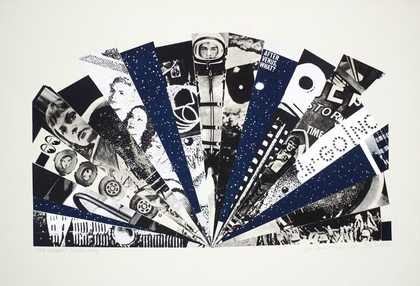
Joe Tilson
10th Sonnet (1964)
Tate
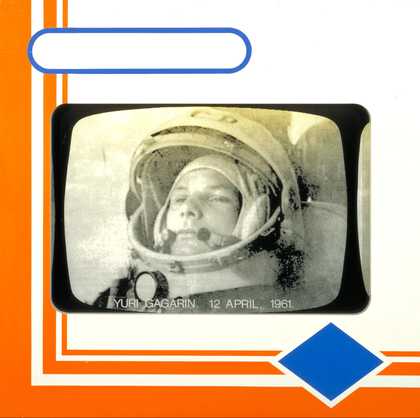
Joe Tilson
Transparency I: Yuri Gagarin 12 April 1961 (1968)
Tate
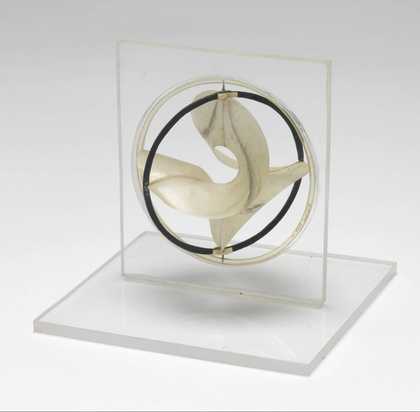
Naum Gabo
Model for ‘Monument to the Astronauts’ (c.1966–8)
Tate
The Work of Naum Gabo © Nina & Graham Williams / Tate, London 2023

Sir Eduardo Paolozzi
D. Top: Culture: Monkeys May be the Next Space Travellers on US Made Satellites. Bottom: X-15’s Maiden Flight (1971)
Tate
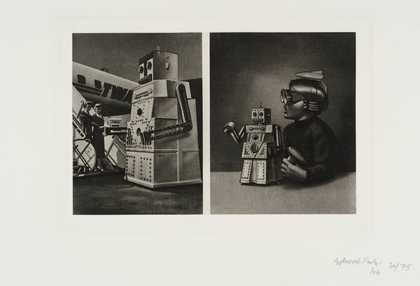
Sir Eduardo Paolozzi
C. Left: Le Robot ‘Robert’ Voulait Aller à New York Mais le Passager est Trop Lourd: TWA Plane - Steps - Cap 14 Persons with Two Stewardesses. Right: Wonder Toy, Robert the Robot (1971)
Tate

Sir Eduardo Paolozzi
F. Top: Chimpanzee in a Test Box Designed for Space Flight. Bottom: Mobot Mark I (1971)
Tate
The Space Race was often seen as a male endeavour (think how often we use the word spaceman when we mean astronaut). But Belgian artist Evelyne Axell took inspiration from the first woman in space, Valentina Tereshkova. In Valentine she fused the modernity of the space race with ideas of female sexual liberation.
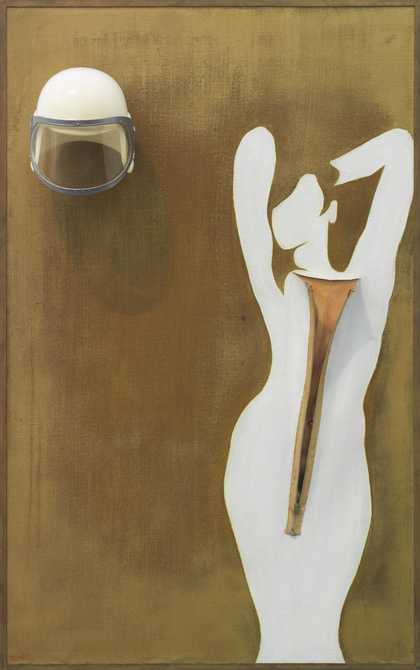
Evelyne Axell
Valentine (1966)
Tate
Since the Moon landing, despite human-piloted missions declining, artists have returned to these iconic moments. In 1999, Aleksandra Mir made a ‘lunar landscape’ on a Dutch beach and planted an American flag, as ‘the first woman on the Moon’. Documenting the process of the artwork she said ‘At this point in history, it is still clear that if a woman wants to land on the Moon, she will have to build it for herself.’
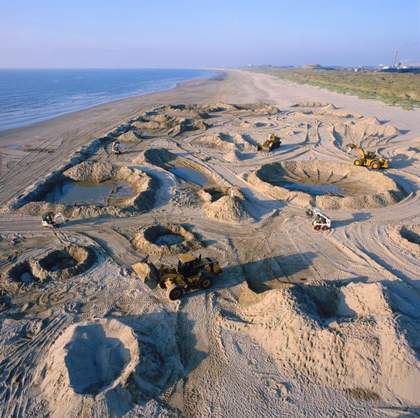
Aleksandra Mir
Tate
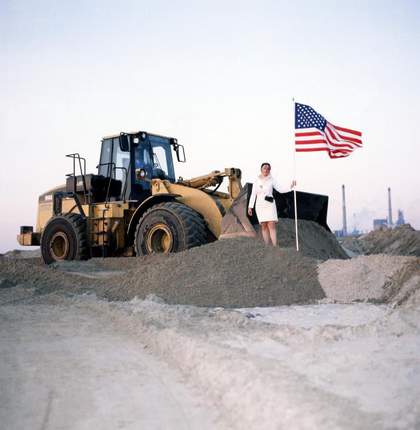
Aleksandra Mir
Tate
Vastness, infinity and the idea of the void
It’s not just sending people to space that has inspired artists. How about the idea of the un-imaginable vastness or infinity of space...
Yayoi Kusama has been fascinated with the idea of endlessness throughout her career. From childhood, she suffered from anxiety and hallucinatory episodes, often in the form of nets or spots multiplying over her vision. Infinity Mirrored Room - Filled with the Brilliance of Life is a room-sized installation. Mirrors cover the walls, ceiling and create a walkway for viewers through a pool of water. Flashing LED lights are hung throughout, receding into the reflections forever.
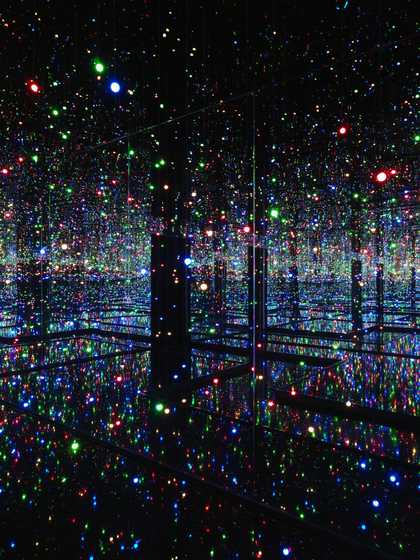
Yayoi Kusama
Infinity Mirrored Room - Filled with the Brilliance of Life (2011/2017)
Tate
Vija Celmins has made many drawings and prints of the night sky. She made her first drawing of a night sky or galaxy in 1973. In the 1980s and 90s it was her principal subject. All the drawings and prints are taken from photographs rather than her own observations. The vastness can suggest freedom as well as claustrophobia or engulfing emptiness. But for Celmins they are as much about surface as depth.
‘Then I moved into the galaxy drawings. Even though you may think they came from lying under the stars, for me, they came out of loving the blackness of the pencil. It’s almost as if I was exploring the blackness of the pencil along with the image that went with it.’

Vija Celmins
Untitled (Source Materials) (1999)
ARTIST ROOMS Tate and National Galleries of Scotland
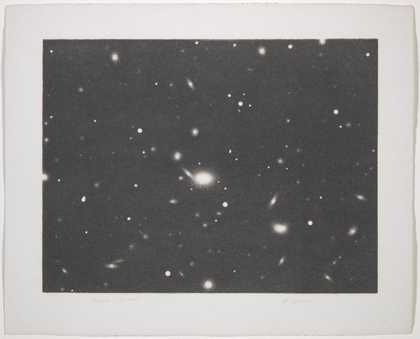
Vija Celmins
Galaxy (1975)
Tate
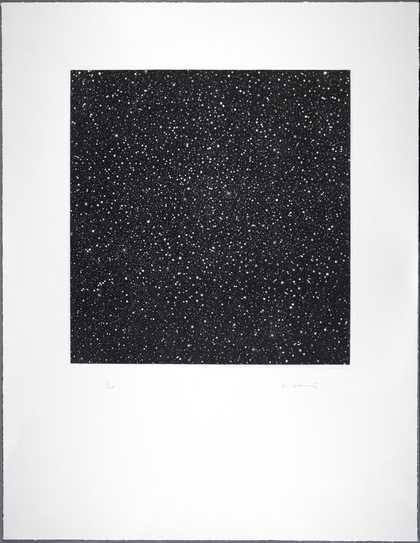
Vija Celmins
December 1984 (1985)
ARTIST ROOMS Tate and National Galleries of Scotland
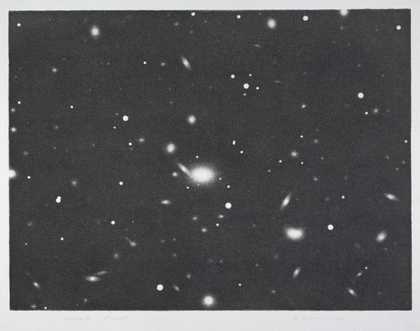
Vija Celmins
Untitled Portfolio: Galaxy (1975)
ARTIST ROOMS Tate and National Galleries of Scotland
Other artists have dropped straight into the idea of the empty void. But how can you represent nothingness?
Heavenly Bodies
Before we even dreamt of the technology to take people into space we were fascinated by the stars and heavenly bodies, and their impact on our lives. Have you ever read your star sign horoscope?
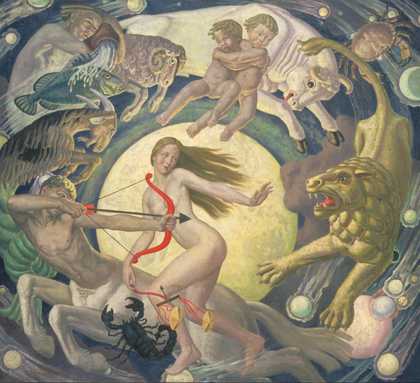
Ernest Procter
The Zodiac (1925)
Tate
Many artists have been inspired by the stories, myths and legends told about the shapes we make in the stars. The Andromeda galaxy (M31) is the closest big galaxy to ours and the most distant thing you can see with the eye alone. Sue Arrowsmith is inspired by the story of Andromeda from ancient Greek legend, chained to a rock to be sacrificed to a sea-monster to save her parents’ kingdom.
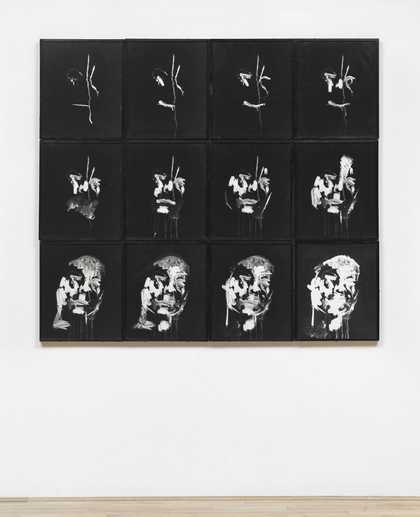
Sue Arrowsmith
Andromeda’s Tear (1982)
Tate
Other heavenly bodies inspire different types of responses from artists. The sun isn’t just a feature in every child’s early drawing – it remains a potent symbol.
Visitors from space
Finally, the idea of things, beings or craft visiting us from space still has the power to fascinate. From meteors falling to earth to superheroes in comic book stories, we love the idea of life out there somewhere.
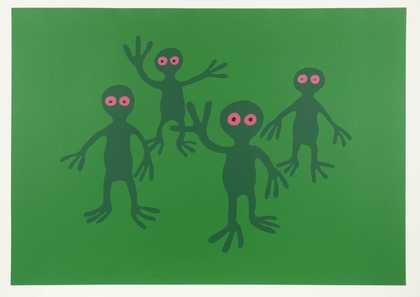
Nicholas Monro
Green Figures (1970)
Tate
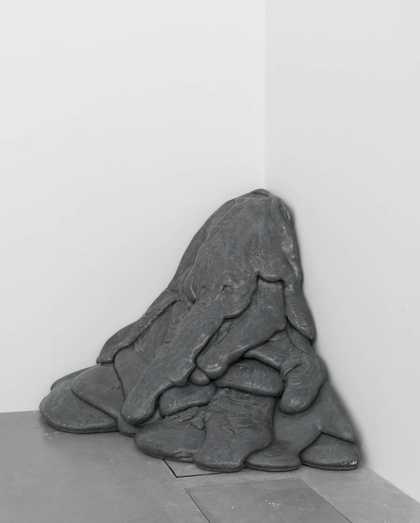
Lynda Benglis
Quartered Meteor (1969, cast 1975)
Tate
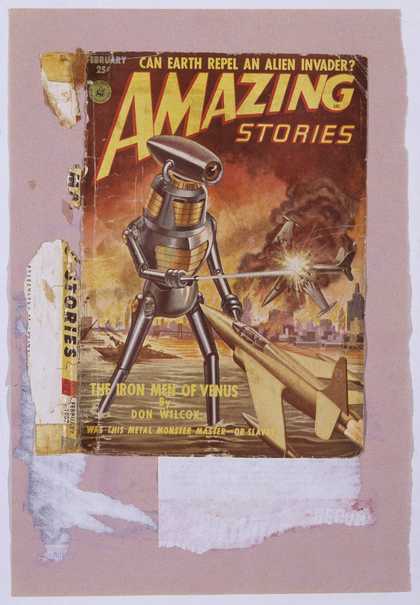
Sir Eduardo Paolozzi
Was This Metal Monster Master - or Slave? (1952)
Tate
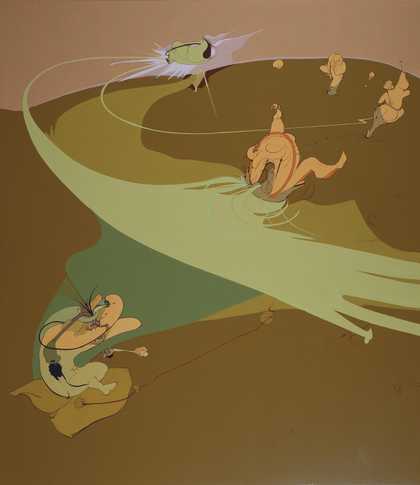
Inka Essenhigh
Born Again (1999–2000)
Tate
Have a go!
Try an activity to get you started:
Pop Collage Mission to Mars
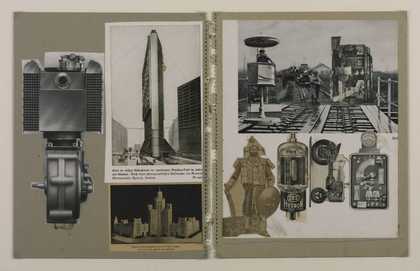
Sir Eduardo Paolozzi
[title not known: page from a scrapbook] (1950s)
Tate
Sir Eduardo Paolozzi kept scrapbooks of popular culture images that caught his eye, and often collaged images together in unexpected ways. You can find some of his scrapbook pages in the Tate Collection, and see how he created artworks from the images he collected.
Space exploration is back on the political scene, with NASA planning for another Mars rover launch in 2020, and another piloted Moon mission in the next 5 years.
- Research how the Mars Mission is being depicted in the news and collect images. Print them out, photocopy them, or cut them from newspapers and magazines, and collect them in your sketchbook.
- As you research, decide how you feel about the space missions – excited, fascinated, anxious, horrified?
- Make prints, drawings or collages pulling together the images you’ve collected to create a sense of how you feel about the missions. Use colour, shape and line to add to them, and see what different feelings different images together conjure up.

